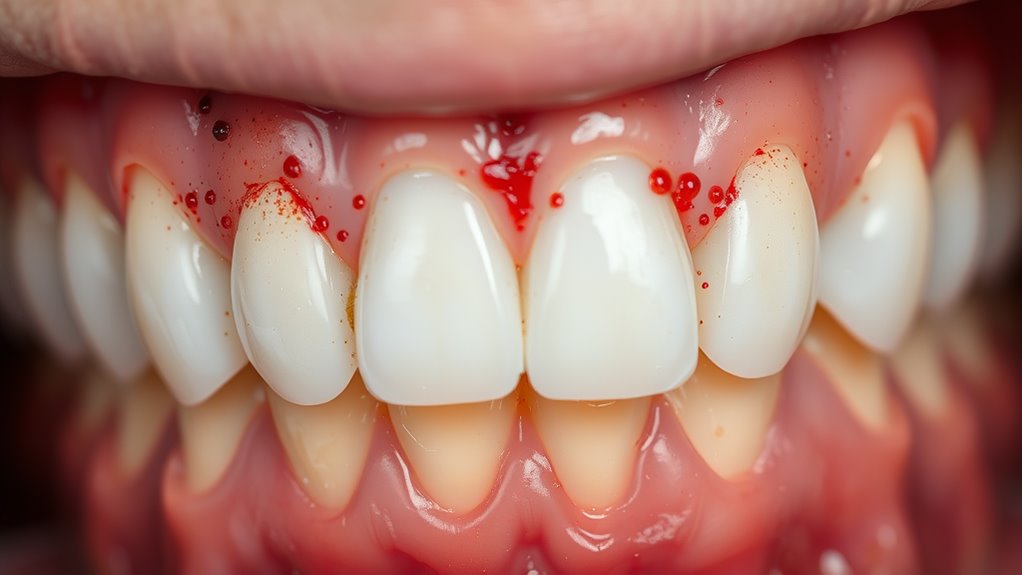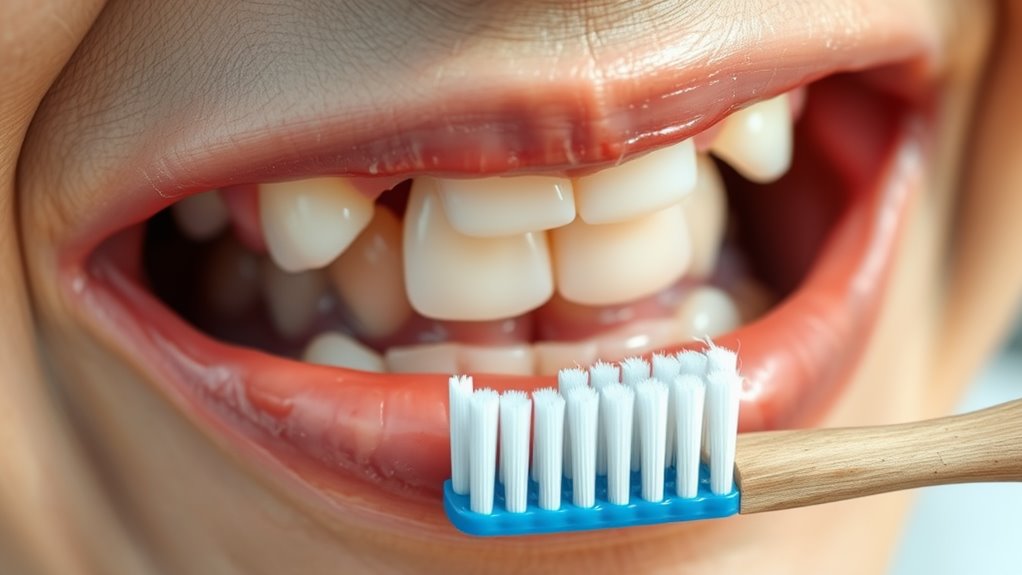Your Gums Are Dying, and You Don’t Even Know It – Signs to Watch For!
Your gums could be under attack right now without you even knowing it. Watch for early warning signs like bleeding when brushing, swollen or tender gums, persistent bad breath, and teeth that appear longer than usual. Don’t ignore these subtle symptoms – gum disease can lead to tooth loss and serious health problems including heart disease and diabetes. Understanding the hidden dangers of gum disease could save more than just your smile.
Understanding Gum Disease: Silent but Deadly
While many people focus on preventing cavities, gum disease often develops quietly beneath the surface, threatening oral health without obvious warning signs.
This progressive condition begins when bacteria-filled plaque builds up along your gum line, causing inflammation that can destroy the supporting structures of your teeth.
You’re dealing with two main stages: gingivitis and periodontitis.
Gingivitis is the milder, reversible form that affects only your gums. If left untreated, it advances to periodontitis, where the infection damages the bone and connective tissues holding your teeth in place.
At this stage, you’re facing potential tooth loss and serious health complications, as gum disease has been linked to heart disease, diabetes, and other systemic conditions.
Early detection and treatment are crucial for preventing these devastating effects.
Early Warning Signs Your Gums Are in Trouble
Recognizing the early signs of gum disease can help you catch problems before they become severe. Watch for red, swollen, or tender gums that bleed when you brush or floss.
If your gums look puffy or appear to be pulling away from your teeth, it’s time to see your dentist.
You might notice persistent bad breath that won’t go away even after brushing, or a lingering metallic taste in your mouth.
Pay attention to any changes in how your teeth fit together when you bite, or if they feel loose. Pus between your teeth and gums is a serious warning sign that shouldn’t be ignored.
Pain while chewing and increased sensitivity to hot or cold temperatures can also indicate gum problems.
Hidden Symptoms That Most People Miss
Did you know that some gum disease symptoms can fly under the radar? While bleeding gums might be obvious, subtler signs often go unnoticed until significant damage occurs.
You might notice your gums receding, making your teeth appear longer than before. A metallic taste in your mouth or persistent bad breath that won’t go away with brushing could signal hidden infection.
Watch for changes in how your teeth fit together when you bite, or gaps appearing between teeth that weren’t there before. Pay attention if flossing becomes painful in specific areas or if your gums feel tender when eating certain foods.
Another overlooked sign is teeth sensitivity to hot or cold temperatures, which can indicate exposed roots due to gum recession.
The Dangerous Link Between Gum Health and Overall Wellness
Beyond causing oral discomfort, gum disease poses serious risks to your entire body’s health. The bacteria that infect your gums can enter your bloodstream, triggering inflammation throughout your body and potentially leading to severe complications.
Research has linked gum disease to heart attacks, strokes, diabetes, and even certain cancers. Your mouth serves as a gateway to your body’s systems, and poor oral health can compromise your immune response.
If you’re diabetic, gum disease may make it harder to control your blood sugar levels. Pregnant women with periodontal issues face higher risks of premature birth and low birth weight babies.
The inflammation from gum disease can also worsen arthritis symptoms and may contribute to respiratory problems. Don’t ignore your gum health – it’s connected to everything else.
Prevention Strategies to Keep Your Gums Alive
With all these serious health risks, you’ll want to take proactive steps to protect your gums. You can dramatically reduce your risk of gum disease by implementing daily preventive measures and making smart lifestyle choices.
| Action Step | Impact on Your Gums |
|---|---|
| Brush twice daily | Removes deadly bacteria before they destroy tissue |
| Floss every night | Reaches hidden killers between teeth |
| Quit smoking now | Stops poisoning your gum tissue |
| Visit dentist biannually | Catches silent destruction early |
| Choose healthy foods | Provides nutrients gums need to fight back |
Don’t wait until you notice bleeding or pain – by then, the damage has begun. Make these prevention strategies part of your daily routine to keep your gums strong and healthy for life.
Treatment Options for Different Stages of Gum Disease
Since gum disease progresses through distinct stages, each level requires specific treatment approaches to stop further damage and restore gum health.
For early gingivitis, you’ll need professional cleaning and improved home care. Your dentist will remove plaque and tartar, while you’ll need to step up your brushing and flossing routine.
Moderate periodontitis calls for scaling and root planing – a deep cleaning procedure that removes bacteria below your gum line. You may also need antibiotic treatments to fight infection.
For advanced cases, you could require surgical intervention, including flap surgery to reduce pocket depth or bone and tissue grafts to regenerate lost structures.
In severe cases where tooth loss has occurred, you might need dental implants or bridges to restore your smile and maintain proper jaw function.




